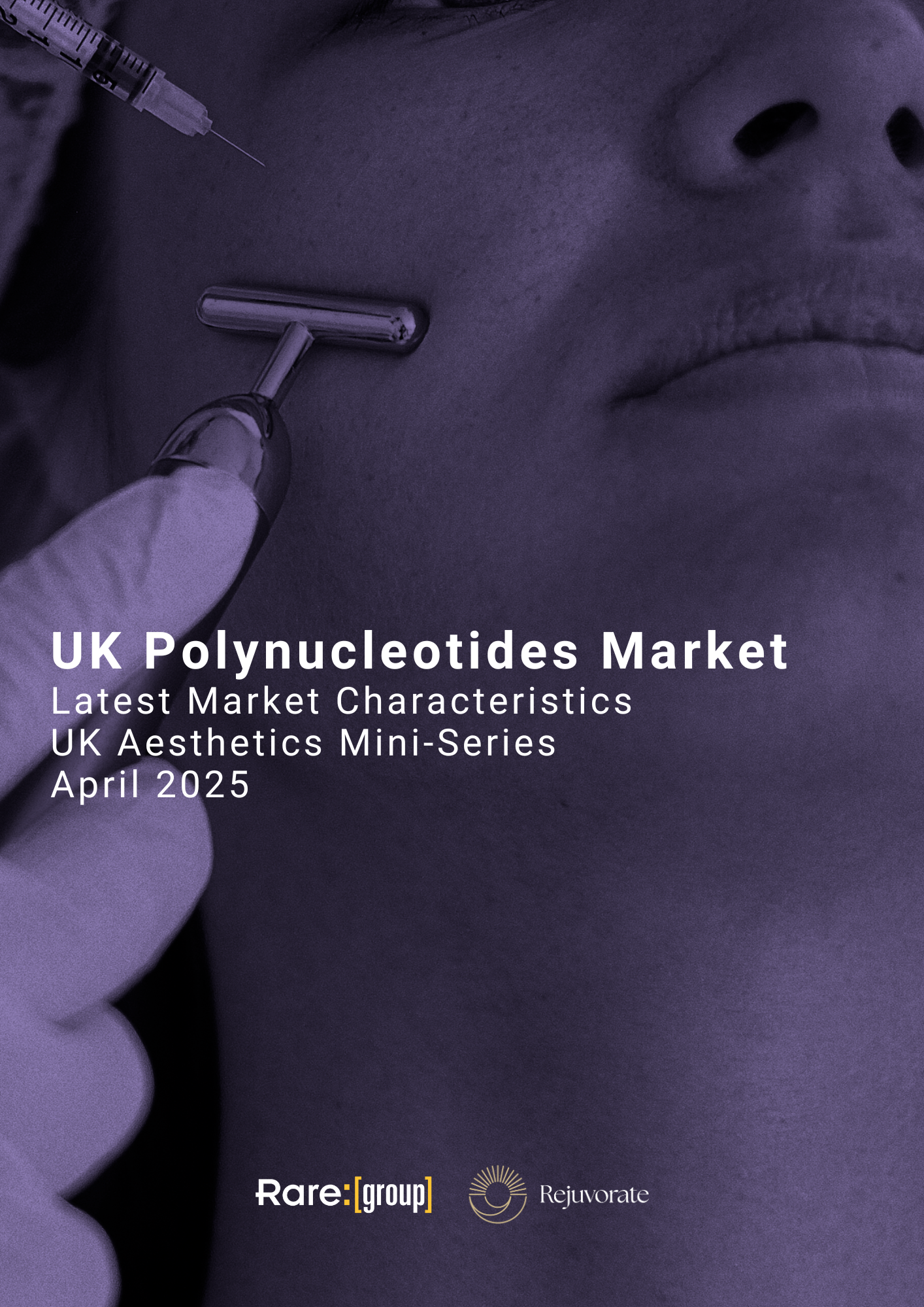Diversification in the UK Aesthetics Market
In recent years, the UK medical aesthetics market has been undergoing a notable shift, with an increasing number of clinics diversifying their service offerings.
At ACE Conference in March 2025, our presentation on the In Practice stage highlighted that 8% of clinics providing injectable treatments have diversified—either by expanding their portfolios to include medical devices or by exiting the injectable market entirely.
This raises an important question: is this part of a broader, ongoing trend?
Insights from ACE Conference 2025
Source - Rare: Monitor
So whats driving this trend?
The Rise of Medical Wellness and Longevity Treatments
Our Beyond Injectables Report (2024) examined the emergence of the medical wellness market within UK aesthetics. This report revealed that around 34% of aesthetic providers are now offering medical wellness and longevity treatments. This shift is likely driven by growing consumer interest in holistic, long-term health solutions rather than short-term aesthetic enhancements.
Additionally, consumer consideration for traditional aesthetic treatments such as dermal fillers and botulinum toxin has declined by 16% and 31%, respectively. This suppression suggests a changing landscape where patients are seeking alternatives that align more closely with overall well-being rather than purely cosmetic outcomes.
The growth of devices in clinics
At another talk we gave at ACE conference , in collaboration with our clients Alma Lasers, we discussed another compelling statistic: in just the last six months, there has been a 12% increase in dermal filler clinics now offering non-injectable device-based treatments. As more device manufacturers enter the market, along with new innovations and providers offering devices on a lease basis, the barrier to entry for clinics continues to lower.
The Role of Regulation in Market Diversification
Regulatory changes are also playing a significant role in pushing diversification. Of the 6% of providers who have stopped practicing botulinum toxin (BTX) treatments, a staggering 99% are unregulated. This suggests that increasing regulatory oversight is pushing unregulated practitioners out of the injectable market, forcing some to reconsider their business models and explore alternative treatments.
For aesthetic clinics, this means that compliance with new regulations will become essential for continued operation. Those unable or unwilling to meet regulatory requirements may need to pivot towards non-injectable offerings to sustain their businesses.
What This Means for Manufacturers
As aesthetic clinics adapt to regulatory and market shifts, manufacturers of aesthetic and medical devices will need to respond accordingly. Several key implications arise:
Increased Demand for Non-Injectable Solutions – With more clinics moving away from injectables, manufacturers of energy-based devices, regenerative treatments, and skincare innovations could see growing demand.
Regulatory-Compliant Product Development – Companies that provide products meeting strict regulatory standards will have a competitive advantage as clinics prioritise compliance.
Educational Support & Training – Manufacturers can support clinics in transitioning to new treatments by offering robust training programmes, helping providers integrate alternative technologies seamlessly.
Strategic Partnerships – Device manufacturers have an opportunity to forge stronger relationships with clinics by providing flexible, innovative solutions that cater to the evolving market landscape.
Download related reports from Rare:










